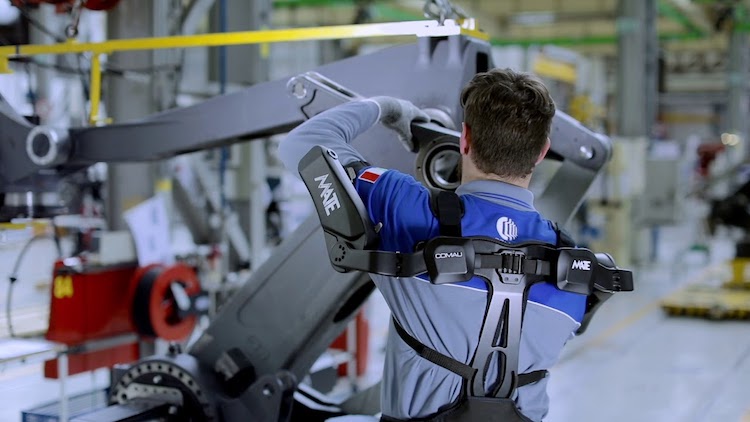
Comau exoskeleton ‘first’ to be awarded EAWS certification
Comau Robotics & Automation claims its “MATE” exoskeleton is the first on the market to receive the Ergonomic Assessment Work-Sheet certification.
The company says the certification provides clear evidence of its exoskeleton’s effectiveness in reducing the “risk of biomechanical overload” of the upper limbs.
Based on the evaluation system promoted by Ergo Foundation, Italy’s reference for the organization and measurement of work and ergonomics, the successful recognition studied workers who used MATE to perform daily tasks requiring flexion-extension of the arms.
This results in an average decrease in the ergonomic scores of 30 percent for the shoulder in static position and 25 percent for dynamic movements of the shoulder, even when considering the handling of small loads.
This certification proves Comau meets the expectations of companies that need to understand concretely how an industrial exoskeleton like MATE can impact their operations.
More specifically, to what degree it can reduce the physical stress of their employees, helping them to carry out their tasks in a more comfortable way, reducing the risk of developing musculoskeletal pathologies over time.
Duilio Amico, marketing and network development director of Comau Robotics & Automation Products, says: “Comau is proud that the MATE exoskeleton is awarded EAWS certification from the Ergo Foundation.
“This result is a further confirmation of the importance of investing in the development of innovative devices, as wearable robotics, to improve the way operators work and make production processes safer and more sustainable.”
Developed by Comau in partnership with IUVO, a spin-off of the BioRobotics Institute of the Scuola Superiore Sant’Anna in Pisa, and Össur, an Icelandic company in the field of non-invasive orthopedic devices, MATE is a passive mechanical exoskeleton that stands out for its capacity to support the shoulders and arms in their natural movement.
It allows workers to feel less physical fatigue, thus improving the overall quality of their activities.


